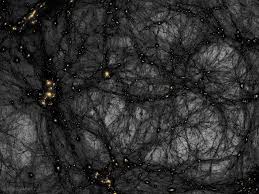
Breaking News
 Why Walmart Is Opening 'Dark Stores' That Customers Can't Go Inside
Why Walmart Is Opening 'Dark Stores' That Customers Can't Go Inside
 As Gaza Starves, US Green Lights More US Weapons To Israel
As Gaza Starves, US Green Lights More US Weapons To Israel
 Marshall Rosenberg talks about money: how to change our relation to money...
Marshall Rosenberg talks about money: how to change our relation to money...
Top Tech News
 xAI Grok 3.5 Renamed Grok 4 and Has Specialized Coding Model
xAI Grok 3.5 Renamed Grok 4 and Has Specialized Coding Model
 AI goes full HAL: Blackmail, espionage, and murder to avoid shutdown
AI goes full HAL: Blackmail, espionage, and murder to avoid shutdown
 BREAKING UPDATE Neuralink and Optimus
BREAKING UPDATE Neuralink and Optimus
 1900 Scientists Say 'Climate Change Not Caused By CO2' – The Real Environment Movement...
1900 Scientists Say 'Climate Change Not Caused By CO2' – The Real Environment Movement...
 New molecule could create stamp-sized drives with 100x more storage
New molecule could create stamp-sized drives with 100x more storage
 DARPA fast tracks flight tests for new military drones
DARPA fast tracks flight tests for new military drones
 ChatGPT May Be Eroding Critical Thinking Skills, According to a New MIT Study
ChatGPT May Be Eroding Critical Thinking Skills, According to a New MIT Study
 How China Won the Thorium Nuclear Energy Race
How China Won the Thorium Nuclear Energy Race
 Sunlight-Powered Catalyst Supercharges Green Hydrogen Production by 800%
Sunlight-Powered Catalyst Supercharges Green Hydrogen Production by 800%
Dark matter: What is it, how do we know it's there and will we find it?

But there's plenty of evidence that this material is very real. So what exactly is dark matter? How do we know it's there? And how are scientists looking for it?
Everything we see around us – from plants to planets, stones to stars, people to the Perseus galaxy cluster – is made of matter. But all of this only accounts for about 15 percent of the total matter in the universe. The overwhelming majority, that remaining 85 percent, is unaccounted for – and we call it dark matter.
This name isn't describing what this strange stuff looks like – it earns that title because it doesn't absorb, reflect or refract light, making it effectively invisible. And there's nothing that can explain it in the Standard Model of particle physics, which remains our best theory on the universe.

 The Algorithmic Oracle
The Algorithmic Oracle  He 3D Printed a Whole House
He 3D Printed a Whole House

